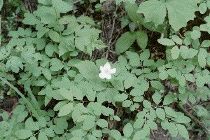
Biology
Biology Lab: Field Exercise #2 - Identify Seasonal Dependencies

Lab Exercise
Remember that field labs must be done in order....on time if possible.
Biology Lab: Field Lab #2
It is time to go back, if possible, to your field area, and note the changes that have occurred there.
The Illustrated Guide to Home Biology Experiments has a number of labs focussing on observation of plants and animals:
- Lab IX-1 Fungi
- Lab X-1 Simple Plants: Mosses and Ferns
- Lab XI-1 Porifera and Cnidaria
- Lab XI-2 Platyhelminthes, Nematoda, and Annelida
- Lab XI-3 Arthropods
See instructions below for including one of these procedures in this field lab.
Goal: To identify changes to your field area due to climate and season changes.
Equipment same as for other field labs--notebooks, field lens and binoculars, etc.
Procedure:
- Review your first field lab report. If you made a survey map, study it so that you can note any new plants or the disappearance of existing ones.
- Revisit your site.
- As completely as possible, note changes in the plants and/or animals which you identified in the survey lab.
- At this time of year, obviously, you can expect to find deciduous trees dropping leaves. If you have gymnosperms (pine/fir/spruce), have their seeds and/or color changed?
- Look also for the appearance of seeds and berries which may not have been visible before (or their disappearance).
- Has the bird population changed? If you live on a migratory pathway or north of the Mason-Dixon line in any part of the country, you can expect to see changes in the type and number of birds now.
- Look at the base of trees and in grass for mushrooms and other fungi.
- Look in and under decaying vegetation for changes in the insect populations.
- Can you find moth casings?
- Many spiders are particularly active at this time of year as they fatten up to lay eggs and die. You can probably find orb spider webs, especially early in the morning when they are dew-covered and easier to see.
- Depending on the availability of forms in your field area, select one of the IGHBE labs listed above (we recommend fungi at this time of year) and complete your observations for the appropriate procedure. Include these in your report.
- Review your report from Field Lab #1. Copy your table of information and include updated information and measurements. Assess the hypothesis your created in Field lab #1: do any changes in the plants and animals you observe now support your hypothesis?
Report
Write up your notes as completely as possible in a formal report, using the same format as you did in Field Lab #1 to make comparisons easier.© 2005 - 2024 This course is offered through Scholars Online, a non-profit organization supporting classical Christian education through online courses. Permission to copy course content (lessons and labs) for personal study is granted to students currently or formerly enrolled in the course through Scholars Online. Reproduction for any other purpose, without the express written consent of the author, is prohibited.